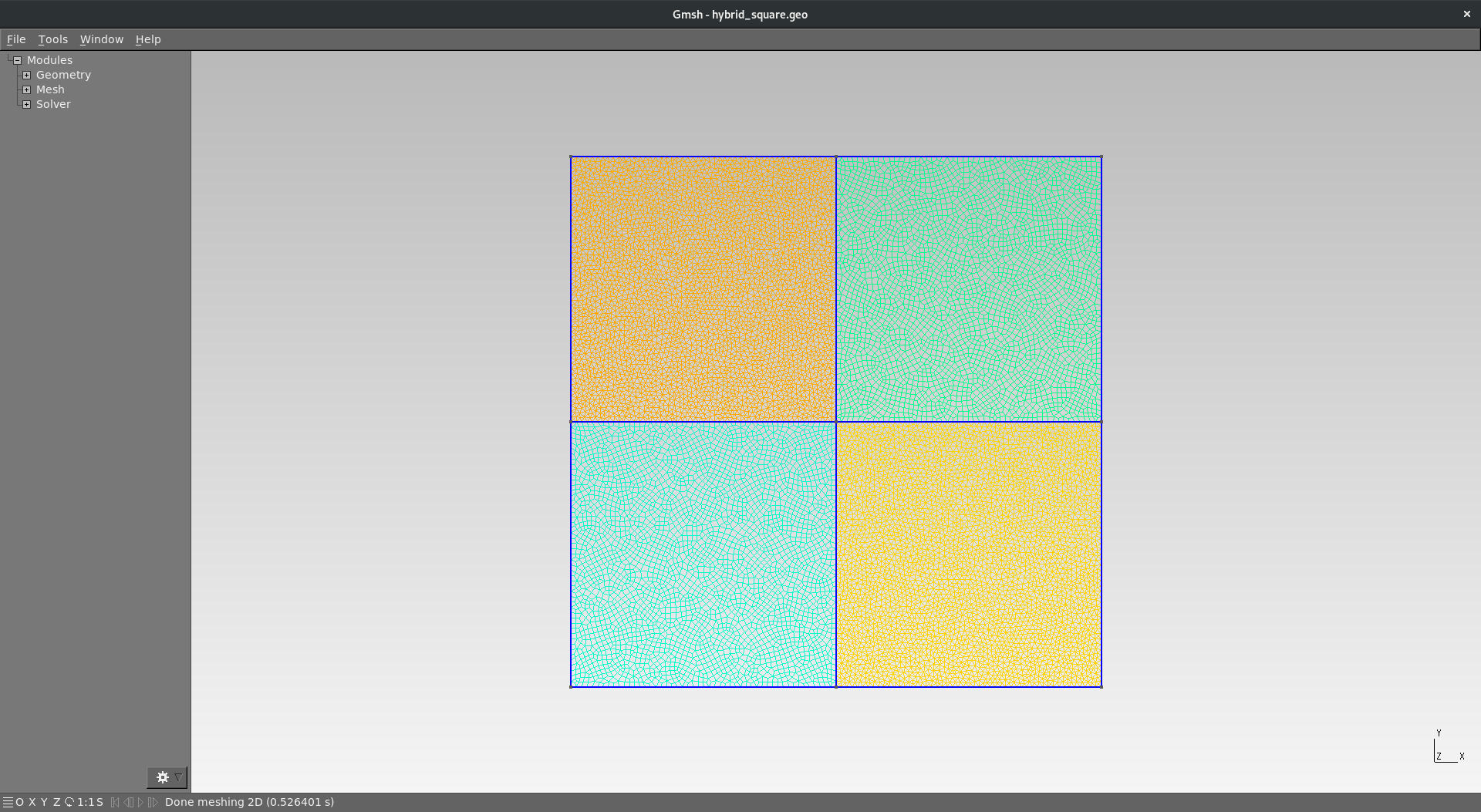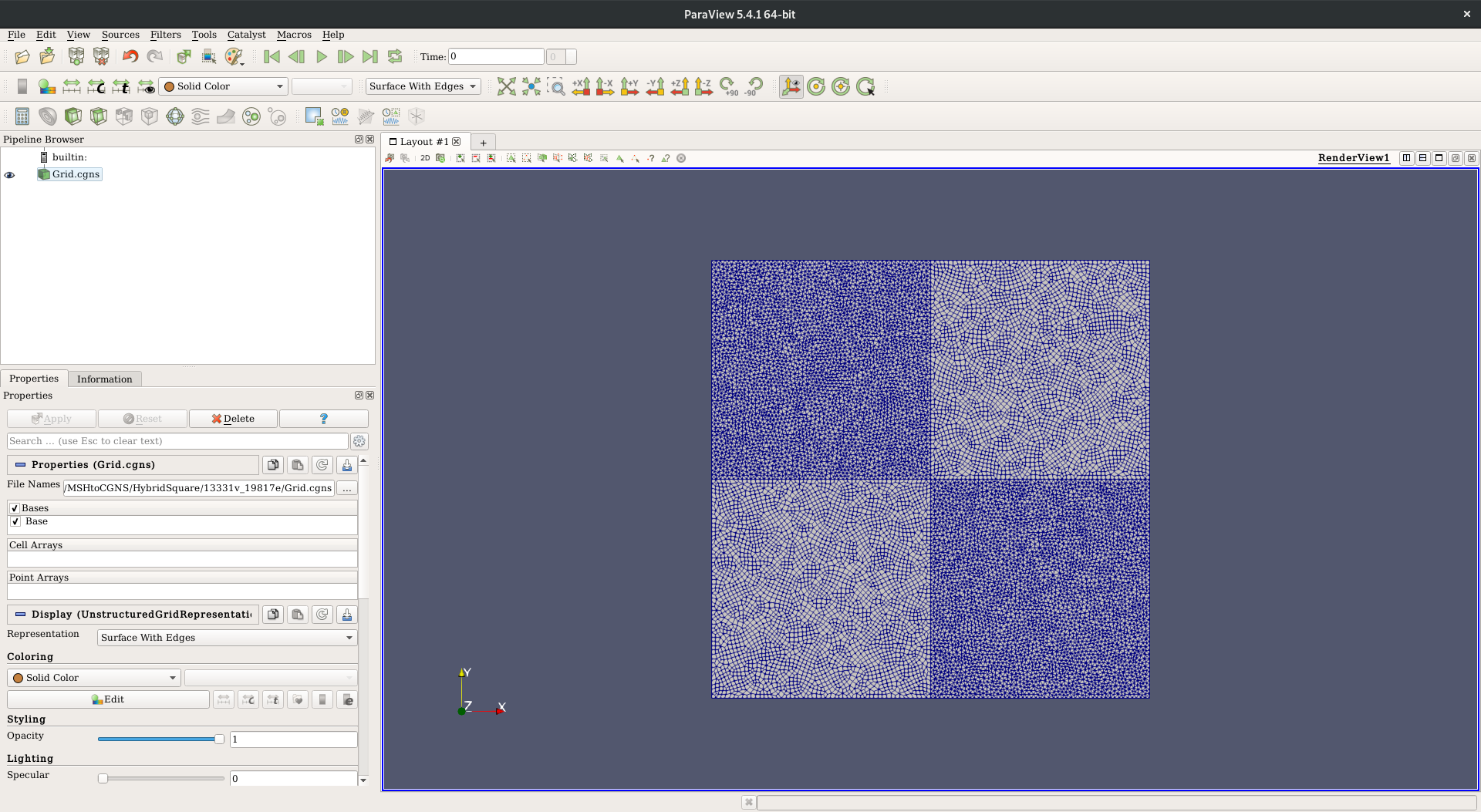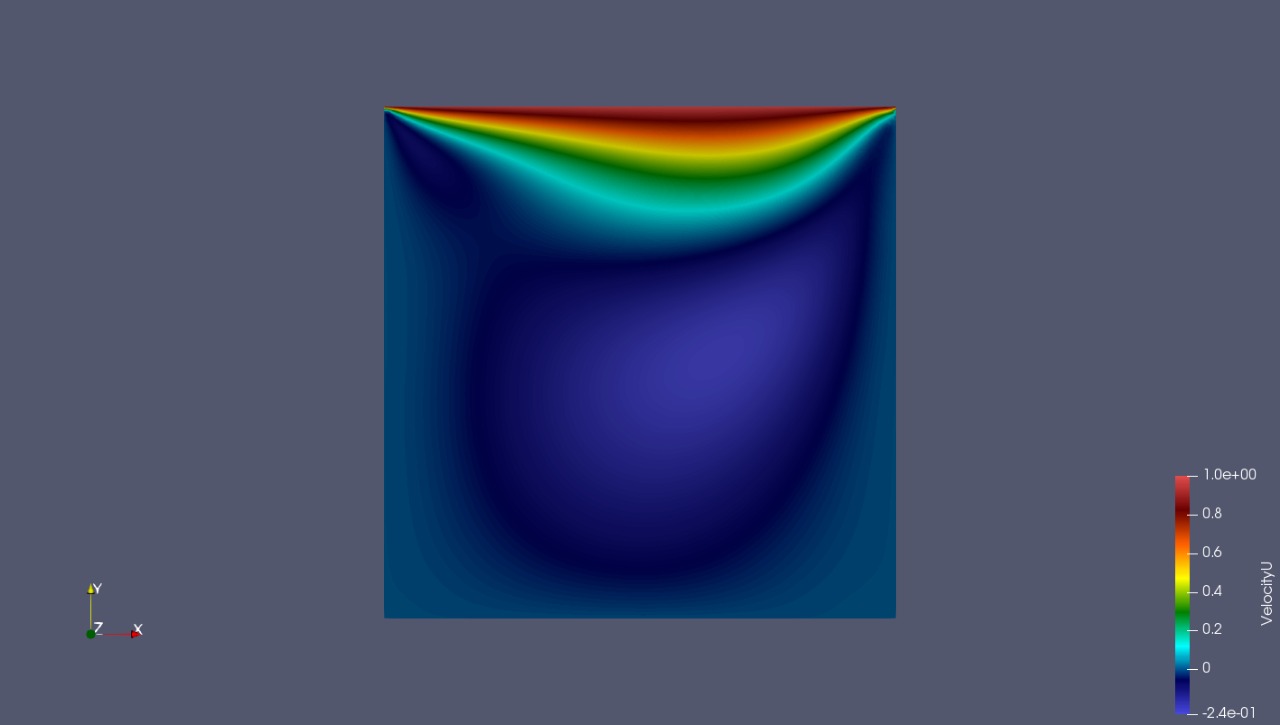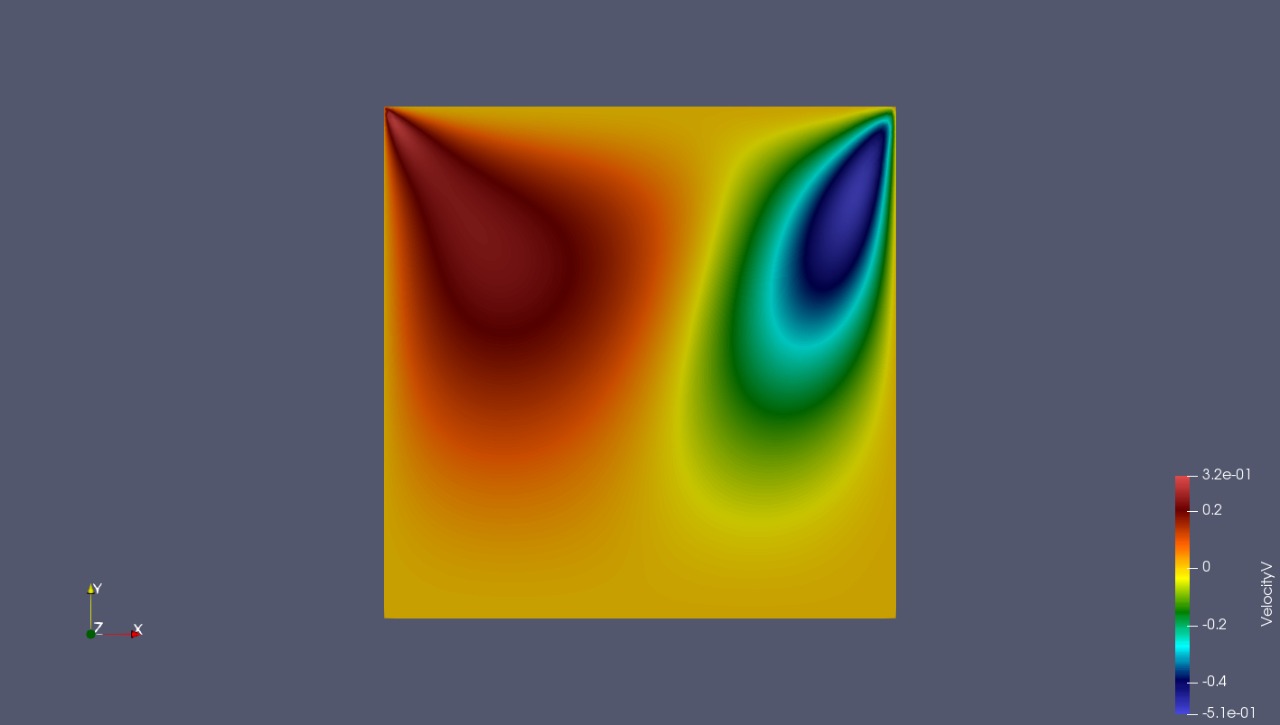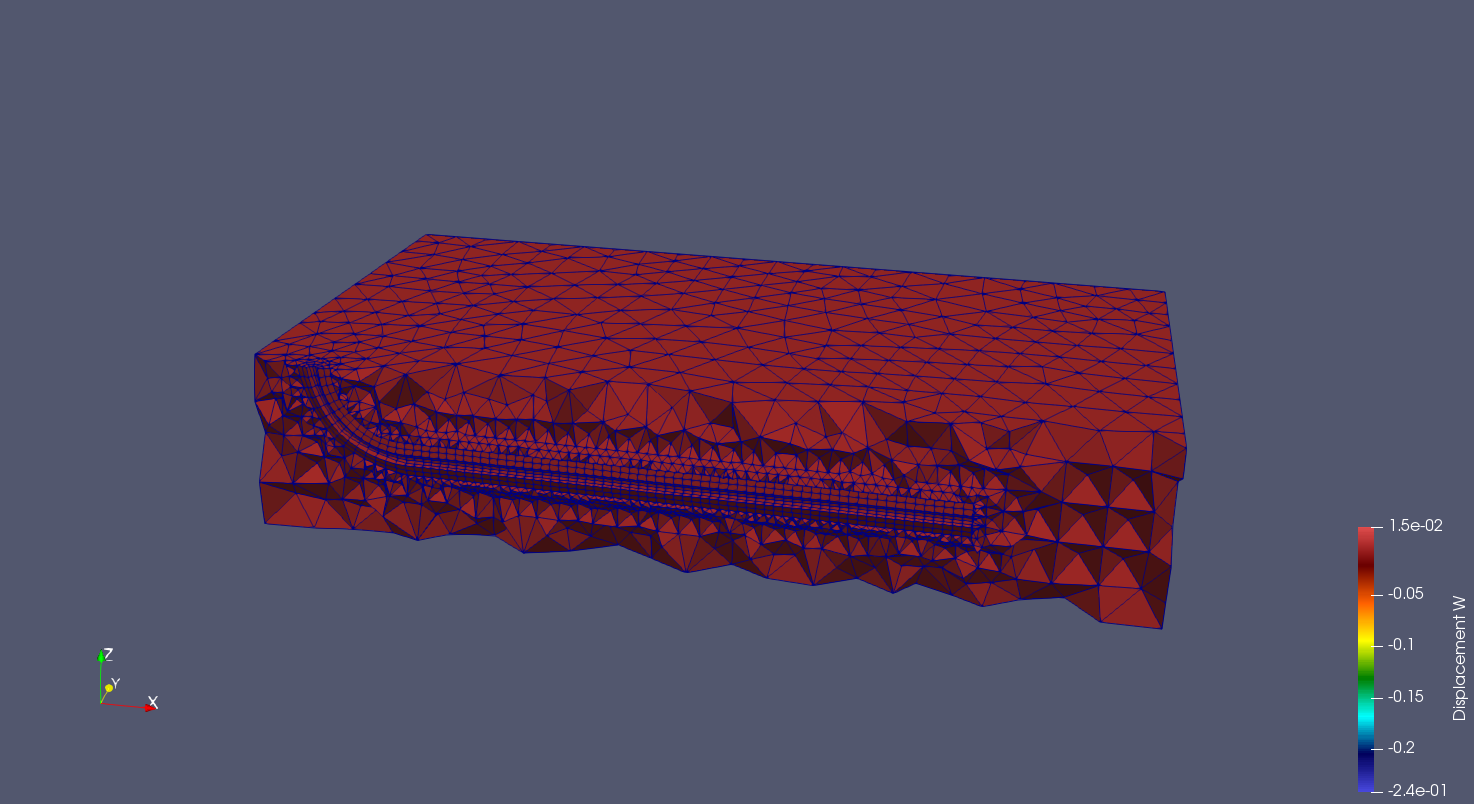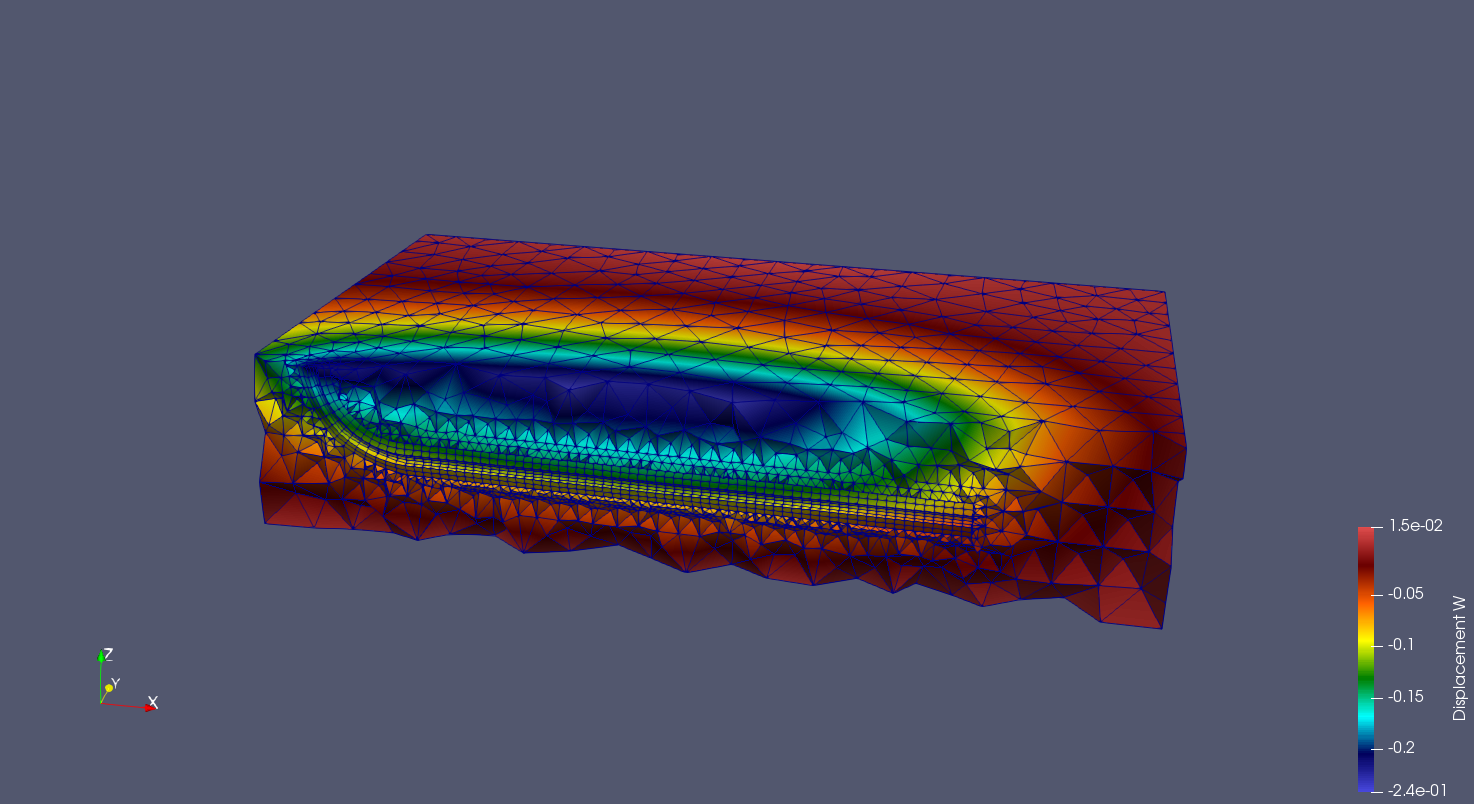Generate a msh grid using gmsh 3.0.6
Convert it to the CGNS format and open it with paraview
This project currently supports
- cgns 3.10 - 4.1.2
- HDF mothernode
- read/write unstructured grids
- write simulation results
To build, it is necessary
In Arch Linux/Manjaro, all dependencies may be installed through LibraryInstaller. Just set the following options in Settings.py
libraries = {
"openmpi" : {"version" : "4.0.2" , "install" : True},
"boost" : {"version" : "1.74.0", "install" : True},
"metis" : {"version" : "5.1.0" , "install" : False},
"petsc" : {"version" : "3.12.2", "install" : False},
"hdf5" : {"version" : "1.10.5", "install" : True},
"cgns" : {"version" : "4.1.2" , "install" : True},
"mshtocgns": {"version" : "4.0.0" , "install" : True},
"dei" : {"version" : "1.0.0" , "install" : False},
"muparser" : {"version" : "2.2.6" , "install" : False},
"triangle" : {"version" : "1.6.0" , "install" : False},
"tetgen" : {"version" : "1.5.1" , "install" : False}
}In Ubuntu 18.04, once the first four dependencies have been installed, you may install Boost and CGNS by executing setup.sh. This script will install shared libraries in release variant.
Simply execute
$ mkdir build
$ cd build
$ cmake .. -G "Unix Makefiles" -DCMAKE_BUILD_TYPE=Release -DBUILD_SHARED_LIBS=TRUE
$ make
$ make testIf you would like to install
$ make installThe file MSHtoCGNS.json, located in Zeta/, specifies the paths to the msh files (inputs) and the path where the directory containing the CGNS files will be created (output). Thus, once you have set this, you may execute
$ ./MSHtoCGNSSimulation input files are read through the CgnsReader.
CgnsReader cgnsReader(std::string filePath);
boost::shared_ptr<GridData> gridData{cgnsReader.gridData};The GridData, in turn, holds vertices coordinates, elements connectivity and the sections they belong to.
struct GridData {
int dimension;
std::vector<std::array<double, 3>> coordinates;
std::vector<std::vector<int>> connectivities;
std::vector<SectionData> sections;
int numberOfLocalVertices;
};Note that the element type is in the connectivity std::vector front, and the element index is at the connectivity std::vector back. As in a CGNS file, the sections hold a contiguous partition of elements -- its information is stored in the SectionData.
struct SectionData {
SectionData() = default;
SectionData(std::string name, int dimension, int begin, int end, std::vector<int> vertices) :
name(name), dimension(dimension), begin(begin), end(end), vertices(vertices) {}
std::string name;
int dimension;
int begin;
int end;
std::vector<int> vertices;
};It is necessary to remark that: boundaries are sections where the boundary conditions are applied, regions are employed to define different physical properties throughout the domain, and wells may be associated to source terms.
Finally, the CgnsWriter is used to write the simulation results in the output file.
class CgnsWriter : public CgnsOpener {
public:
CgnsWriter() = default;
CgnsWriter(std::string filePath, std::string gridLocation);
void writeSolution(std::string name);
void writeSolution(double timeValue);
void writeField(std::string name, const std::vector<double>& values);
void writeField(std::string name, const std::vector<int>& values);
void finalizeTransient();
...
}Easily visualised results with paraview.
MSHtoCGNS may be easily imported to any project using CMake, just make sure FindMSHtoCGNS.cmake is on your CMAKE_MODULE_PATH. Hence, you may use this snippet
set (MSHTOCGNS_DIR $ENV{MSHTOCGNS_DIR}/${BUILD_TYPE}/${LIBRARY_TYPE})
find_package (MSHtoCGNS REQUIRED)
if (MSHTOCGNS_FOUND)
include_directories (${MSHTOCGNS_INCLUDE_DIR})
endif ()
...
target_link_libraries (${_target} ${MSHTOCGNS_LIBRARIES})Usually,
$ENV{MSHTOCGNS_DIR} is set to a directory such as /home/felipe/Libraries/mshtocgns-0.16.0
${BUILD_TYPE} is the lower case ${CMAKE_BUILD_TYPE} - release OR debug
${LIBRARY_TYPE} is the lower case library type - shared OR static
You may also set ${MSHTOCGNS_DIR} (on your project's CMakeLists.txt) to the installation directory of MSHtoCGNS.
For MSH file format version 4.1, geometrical entities must be associated to none or a single physical entity. Otherwise, the MSH reader may not work properly.
